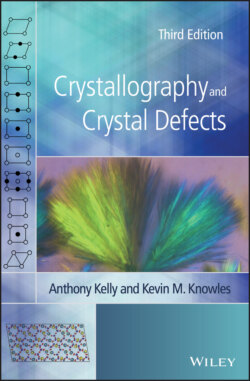Читать книгу Crystallography and Crystal Defects - Anthony Kelly - Страница 40
2.11 Laue Groups
ОглавлениеSome physical methods of examination of crystals cannot determine whether or not there is a centre of symmetry present, such as when stationary single crystals are illuminated by a continuous distribution of X‐ray wavelengths (known as ‘white radiation’) to produce Laue diffraction patterns. This is known as the Laue method. Such diffraction patterns are used for symmetry determination and for the accurate alignment of crystals; they are also useful for time‐resolved macromolecular crystallography using synchrotron radiation. The Laue group is the crystal class to which a particular crystal belongs if a centre of symmetry is added to the symmetry elements already present. The 11 Laue groups are shown in Table 2.2. The loss of symmetry information in time‐resolved macromolecular crystallography is more than compensated for by the ability to capture structural information over subnanosecond timescales in fast chemical reactions such as enzyme reactions.
Table 2.2 Laue groups
| System | Class | Laue group |
| Cubic | 432, 3m, 23, | |
| Hexagonal | 622, 6mm, m2, 6/mmm 6, , 6/m | 6/mmm 6/m |
| Tetragonal | 422, 4mm, m2, 4/mmm 4, , 4/m | 4/mmm 4/m |
| Trigonal | 32, 3m, 3, | |
| Orthorhombic | 222, 2mm, mmm | mmm |
| Monoclinic | 2, m, 2/m | 2/m |
| Triclinic | 1, |
